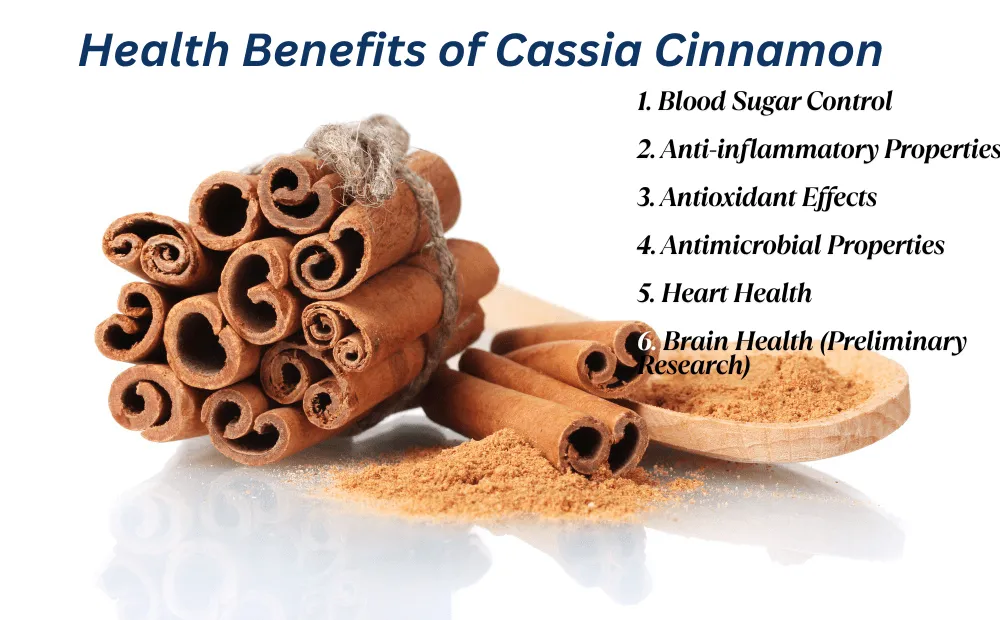Cassia cinnamon is one of the most widely used spices in kitchens across the world. Known for its bold flavor and warm aroma, it’s the type of cinnamon most commonly found in grocery stores. But while it’s affordable and flavorful, Cassia cinnamon has some important distinctions — especially when it comes to health and daily use.
In this post, we’ll explore what Cassia cinnamon is, how it compares to Ceylon cinnamon, its health benefits, and how to use it safely.
What Is Cassia Cinnamon?
Cassia cinnamon comes from the bark of the Cinnamomum cassia tree, native to China and widely cultivated in Indonesia and Vietnam. This variety is often referred to as Chinese cinnamon and is the most common type sold in the U.S. and other Western countries.
Key Characteristics of Cassia Cinnamon:
- Flavor: Strong, spicy, slightly bitter
- Color: Dark reddish-brown
- Texture: Thick, hard bark (often curled into single-layered sticks)
- Coumarin Content: High — should be consumed in moderation
Health Benefits of Cassia Cinnamon
Despite concerns around coumarin content, Cassia cinnamon offers several health benefits when consumed in small to moderate amounts:
1. Blood Sugar Regulation
Cassia cinnamon may help lower blood sugar levels by improving insulin sensitivity. It’s often studied for its potential support in managing type 2 diabetes.
2. Heart Health Support
Some research suggests Cassia cinnamon may reduce LDL (bad) cholesterol and triglycerides, while maintaining HDL (good) cholesterol — supporting overall cardiovascular health.
3. Rich in Antioxidants
Cassia contains antioxidants like polyphenols, which help fight oxidative stress and inflammation in the body.
4. Antimicrobial Properties
Cinnamaldehyde, the main active compound in Cassia cinnamon, has antibacterial and antifungal effects that may support immune health.
Coumarin: Why Moderation Matters
One of the key concerns with Cassia cinnamon is its high coumarin content. Coumarin is a naturally occurring compound that may cause liver damage or interact with medications if consumed in large quantities over time.
💡 Tip: If you use cinnamon daily or in large amounts, consider switching to Ceylon cinnamon, which has much lower coumarin levels.
How to Use Cassia Cinnamon in Your Kitchen
Cassia cinnamon’s strong, spicy flavor makes it ideal for bold recipes and baked goods. Here are a few ideas:
- Sprinkle on oatmeal, pancakes, or roasted sweet potatoes
- Stir into coffee, hot chocolate, or chai
- Use in spice rubs, stews, or marinades
- Add to baked goods like cinnamon rolls or snickerdoodles
Because it’s inexpensive and widely available, Cassia is perfect for occasional use in both sweet and savory dishes.
Cassia vs. Ceylon Cinnamon: What’s the Difference?
| Feature | Cassia Cinnamon | Ceylon Cinnamon |
|---|---|---|
| Flavor | Strong, spicy | Mild, sweet |
| Appearance | Thick, hard bark | Thin, soft, crumbly layers |
| Coumarin Content | High (limit daily intake) | Low (safer for regular use) |
| Cost | Affordable | More expensive |
| Availability | Widely available in supermarkets | Found in specialty/health stores |
Where to Buy Cassia Cinnamon
You can find Cassia cinnamon in most supermarkets, typically labeled simply as “ground cinnamon” or “cinnamon sticks.” To confirm it’s Cassia, look for:
- No mention of “Ceylon” or “true cinnamon”
- Country of origin: China, Indonesia, or Vietnam
- Hard, thick cinnamon sticks
Final Thoughts
Cassia cinnamon is a flavorful, affordable spice that offers several health benefits when enjoyed in moderation. While it’s not ideal for daily medicinal use due to its higher coumarin content, it’s perfectly safe and delicious in most everyday recipes.
If you’re a fan of bold flavors and use cinnamon occasionally, Cassia is a great choice. For regular daily intake, consider switching to Ceylon cinnamon for a gentler, safer option.












